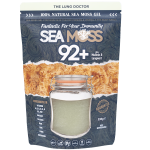INFLUENZA
INFLUENZA

Influenza, commonly known as the flu, is a contagious respiratory illness caused by viruses that infect the nose, throat, and sometimes the lungs. It can range from mild to severe, and in some cases, it can be life-threatening. The flu spreads easily through contact with infected surfaces or respiratory droplets.
Symptoms include fever, weakness, nasal congestion, sore throat, and body aches. Natural remedies, along with rest and proper hydration, can help alleviate symptoms. Certain herbs, foods, and fruits such as ginger, honey, lemon, orange, peppermint, and turmeric are known for their potential immune-boosting and antiviral properties. Adequate intake of vitamins C and D, as well as zinc, can also support the immune system in fighting influenza.
Description
Influenza, commonly known as the flu, is a highly contagious respiratory illness caused by influenza viruses. It affects the nose, throat, and lungs, leading to a range of symptoms from mild to severe. The flu is transmitted through respiratory droplets when an infected person coughs, sneezes, or talks, as well as through touching contaminated surfaces.
Symptoms of influenza include fever, cough, sore throat, nasal congestion, body aches, fatigue, and headaches. While most people recover within a week or two, complications can arise, especially in vulnerable populations.
Good hygiene practices, such as handwashing, and antiviral medications are common measures for prevention and treatment of influenza.
Influenza, commonly known as the flu, is characterised by a range of symptoms that can vary in severity. Common symptoms of influenza include:
- Fever: Influenza often starts with a sudden onset of high fever, which can be accompanied by chills and sweats.
- General Discomfort: People with the flu may experience overall feelings of fatigue, weakness, and malaise. This can make it challenging to perform daily activities.
- Respiratory Symptoms: Influenza typically affects the respiratory system. Symptoms can include a stuffy or runny nose, sore throat, and cough. The cough can be dry or produce mucus.
- Body Aches: Muscle aches and joint pain are common with the flu, often described as feeling like you've been hit by a truck.
- Headache: Many people with influenza experience headaches, which can range from mild to severe.
- Fatigue: The flu can cause extreme tiredness and a feeling of weakness, which can last for several weeks.
- Chest Discomfort: Some individuals with the flu may feel chest discomfort or tightness. In severe cases, the flu can lead to pneumonia, which can cause more serious respiratory symptoms.
- Gastrointestinal Symptoms: While less common, some people with influenza may experience nausea, vomiting, or diarrhoea.
Influenza is classified into three types:
- Influenza A (H1N1 and H3N2): Influenza A viruses can infect humans and a variety of animals, including birds and pigs. Within the human population, there are different subtypes of Influenza A viruses, with the most common being H1N1 and H3N2. Influenza A viruses are responsible for seasonal flu outbreaks and can also cause pandemics.
- Influenza B: Influenza B viruses only infect humans and tend to cause milder illness compared to Influenza A. They are also responsible for seasonal flu outbreaks.
- Influenza C: Influenza C viruses can infect humans and pigs, but they typically cause milder respiratory symptoms and are not associated with significant outbreaks or pandemics.
Influenza, or the flu, is a viral infection caused by influenza viruses. The seasonal nature of influenza outbreaks is influenced by several factors:
- Viral Mutation: Influenza viruses have a tendency to mutate rapidly. This means that new strains of the virus can emerge each year. These changes in the viral genome can lead to the development of influenza strains that are different from those in previous years. This is why there is a need for an annual flu vaccine, which is designed to provide protection against the most prevalent strains for that particular season.
- Seasonal Factors: In many parts of the world, influenza tends to be more common during the fall and winter months. This seasonality is thought to be influenced by various factors, including lower humidity, colder temperatures, and reduced exposure to sunlight. These conditions may create an environment where the virus can survive and spread more easily.
- Weak Immune System: Individuals with weakened immune systems are more susceptible to infections, including influenza. Certain medical conditions or medications can weaken the immune system, making it harder for the body to fend off the virus.
- Lack of Immunity to the Virus: When a new strain of influenza virus emerges, the population may have little to no pre-existing immunity to it. This can lead to more widespread infections and larger outbreaks.
- Travel: Modern transportation allows people to travel easily between regions and countries. Travel can contribute to the spread of influenza as infected individuals can transmit the virus to new areas.
Influenza, or the flu, is a viral infection caused by influenza viruses. While the immune system can often overcome the infection on its own, antiviral medications may be prescribed in certain situations, especially for individuals at higher risk of complications. Two common antiviral drugs used to treat influenza are:
- Oseltamivir (Tamiflu): Oseltamivir is an antiviral medication that can be prescribed to reduce the severity and duration of influenza symptoms. It works by inhibiting the activity of the influenza virus, specifically neuraminidase, an enzyme that helps the virus replicate and spread within the body. Oseltamivir is typically taken orally as a pill or liquid. It is most effective when started within 48 hours of the onset of flu symptoms.
- Baloxavir Marboxil (Xofluza): Baloxavir marboxil is another antiviral medication used to treat influenza. It works by inhibiting an enzyme called cap-dependent endonuclease, which is essential for the replication of the influenza virus. Baloxavir marboxil is taken as a single oral dose. It can also help reduce the severity and duration of flu symptoms when taken early in the course of the illness.
Natural treatments and home remedies can be helpful in managing the symptoms of influenza and supporting your immune system as your body fights the virus. Here are some natural approaches that may provide relief during influenza:
- Stay Hydrated: Drinking plenty of fluids, such as water, herbal teas, and clear broths, can help keep you hydrated and soothe a sore throat. Staying hydrated is essential during illness.
- Rest: Adequate rest is crucial for your body to recover from the flu. Make sure to get plenty of sleep and give your body the time it needs to heal.
- Good Sleep Habits: Ensure you have a comfortable and restful sleep environment. Maintain a consistent sleep schedule to support your immune system.
- Aromatherapy: Some essential oils, such as eucalyptus, peppermint, and lavender, may help relieve congestion and ease respiratory symptoms. You can use a diffuser or add a few drops of essential oil to hot water and inhale the steam.
- Hot Drinks and Soups: Warm beverages like herbal teas, honey and lemon tea, or hot water with ginger and honey can soothe a sore throat and provide comfort. Chicken soup is also a classic remedy that can help relieve congestion and provide nutrients.
- Salt Water Gargle: Gargling with warm salt water can help soothe a sore throat and reduce throat irritation.
- Inhaling Steam: Inhaling steam from a bowl of hot water or a steamy shower can help relieve nasal congestion and ease breathing difficulties.
- Balanced Diet: Eating a well-balanced diet rich in fruits, vegetables, and whole grains provides essential nutrients to support your immune system. Foods high in vitamin C (e.g., citrus fruits) and zinc (e.g., nuts, seeds) can be particularly beneficial.









